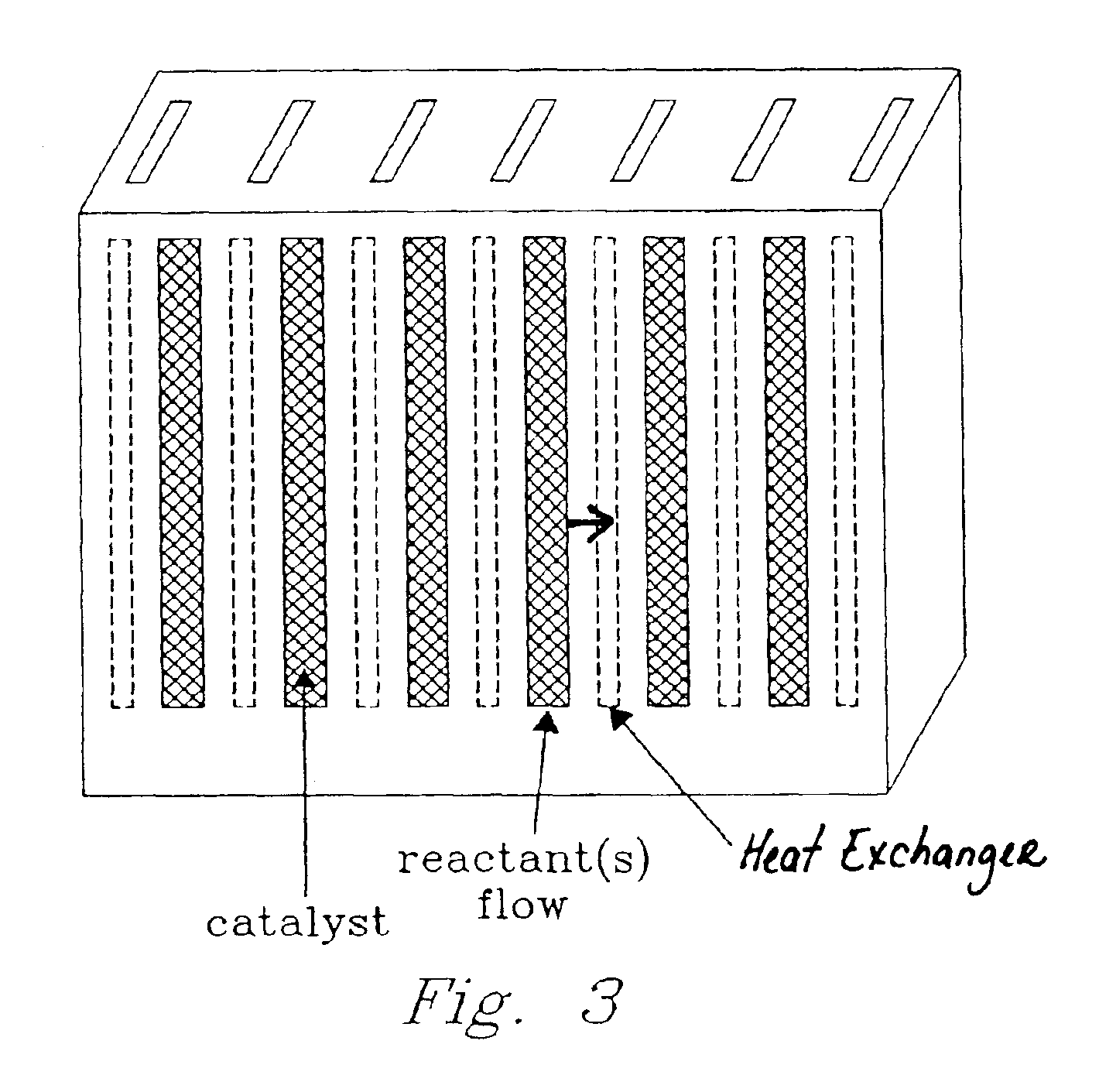Catalyst structure and method of fischer-tropsch synthesis
a technology applied in the field of catalyst structure and method of making, and a method of fischertropsch synthesis, can solve the problems of inability to improve conventional reactors, severe limitation of the reaction rate, and hot spots in the catalyst bed, so as to achieve no increase in methane selectivity, increase conversion, and increase the effect of conversion
- Summary
- Abstract
- Description
- Claims
- Application Information
AI Technical Summary
Benefits of technology
Problems solved by technology
Method used
Image
Examples
example 1
[0052]The effect of residence time and reaction temperature on the catalytic conversion of CO with H2 was examined in a constant flow reactor. The reactor was supplied with a mixture of feed gas, comprised of H2 and CO in a molar, or volumetric (assuming ideal gas behavior), ratio of H2 / CO=3. This reactant feed was fed into a reaction chamber, which was maintained at a constant temperature inside an isothermal furnace. The interior of the catalyst chamber measures 35.6-mm (1.4-in) in length, 1.5-mm (0.060-in) in thickness and 8-mm (0.315-in) in width. The reaction products then exited the reaction chamber and were collected and analyzed for composition.
[0053]The catalyst for this experiment was prepared as follows. First, acidic gamma-alumina support powder (Strem) was ground and sieved to between 70- and 100-mesh (150 to 220-micron), and calcined (stabilized) at 500° C. for several hours. This powder was then impregnated with a solution containing cobalt nitrate hexahydrate and rut...
example 2
[0062]An experiment was conducted to demonstrate operation at various pressures. The equipment was the same as in Example 1.
[0063]According to the literature, variation in pressure should only affect true residence time in Fischer-Tropsch synthesis. In other words, conventional wisdom in Fischer-Tropsch reactions is that reaction rate is proportional to pressure under identical residence time. However, as shown in Table E2-1, with the catalyst structure of the present invention, catalyst activity was unexpectedly enhanced as the pressure was decreased under the same residence time. This surprising result is attributed to the enhanced mass and heat transfer possible with the catalyst structure of the present invention.
[0064]
TABLE E2-1Engineered catalyst performance for Fischer-Tropsch synthesis atabout 250° C. under a constant residence time (i.e., temperature andpressure corrected contact time) of 12.5 seconds. The contact time at24 atm (absolute) is 1 sec.Pressure, atm(absolute)Con...
example 3
[0065]Use of acidic gamma alumina supported Co or Ru alone as a catalyst on the metal foam was also tested under the conditions of Example 1 and performance was found to be worse than that of bimetallic catalyst such as Co—Ru.
PUM
| Property | Measurement | Unit |
|---|---|---|
| Temperature | aaaaa | aaaaa |
| Temperature | aaaaa | aaaaa |
| Temperature | aaaaa | aaaaa |
Abstract
Description
Claims
Application Information
 Login to View More
Login to View More - R&D
- Intellectual Property
- Life Sciences
- Materials
- Tech Scout
- Unparalleled Data Quality
- Higher Quality Content
- 60% Fewer Hallucinations
Browse by: Latest US Patents, China's latest patents, Technical Efficacy Thesaurus, Application Domain, Technology Topic, Popular Technical Reports.
© 2025 PatSnap. All rights reserved.Legal|Privacy policy|Modern Slavery Act Transparency Statement|Sitemap|About US| Contact US: help@patsnap.com



